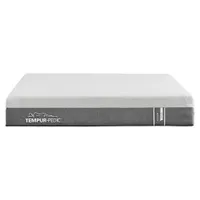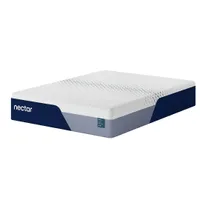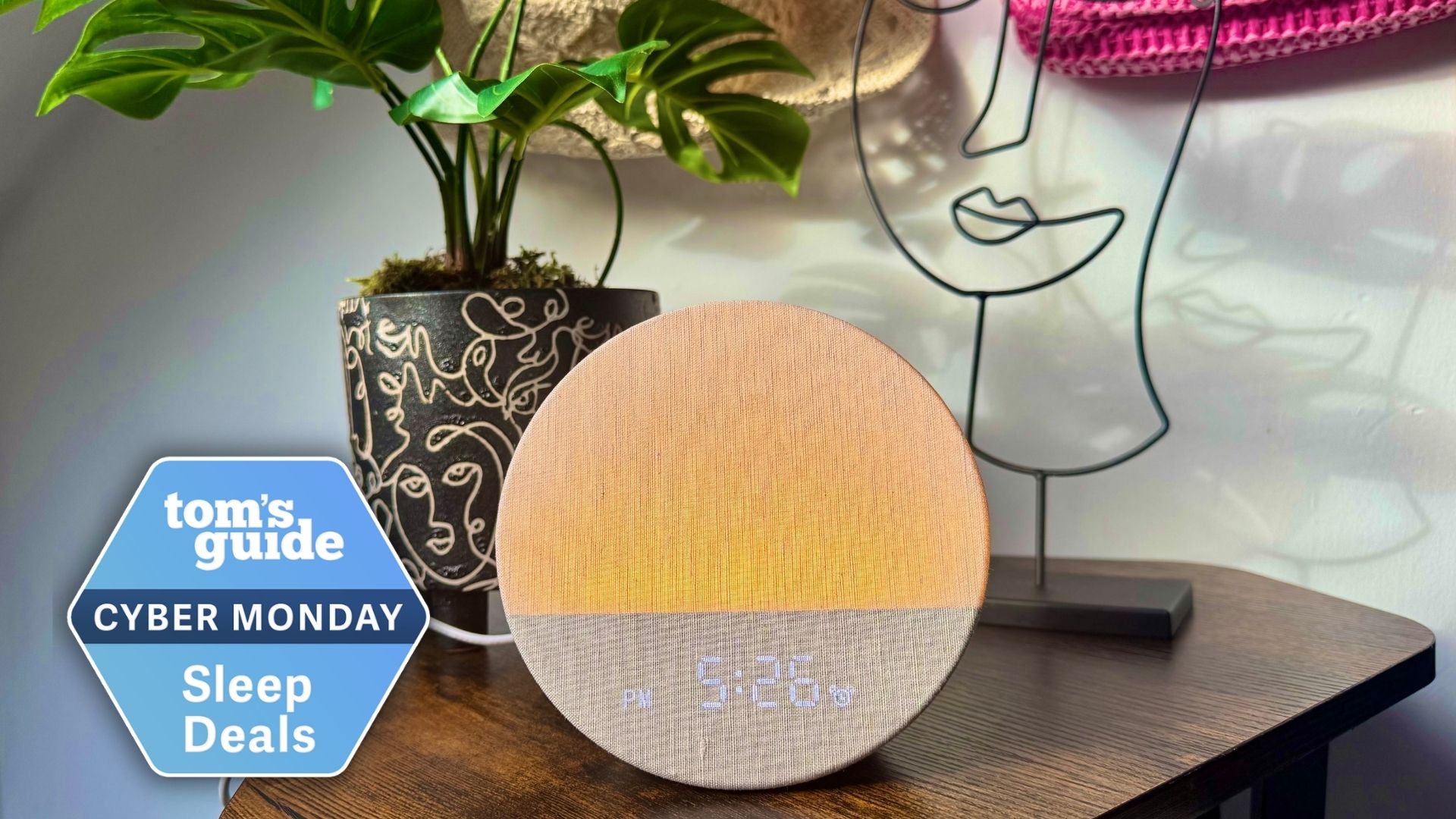How does Tempur-Pedic's mattress material compare with memory foam? We take a look
We explore the price, feel and design of Tempur-Material vs memory foam
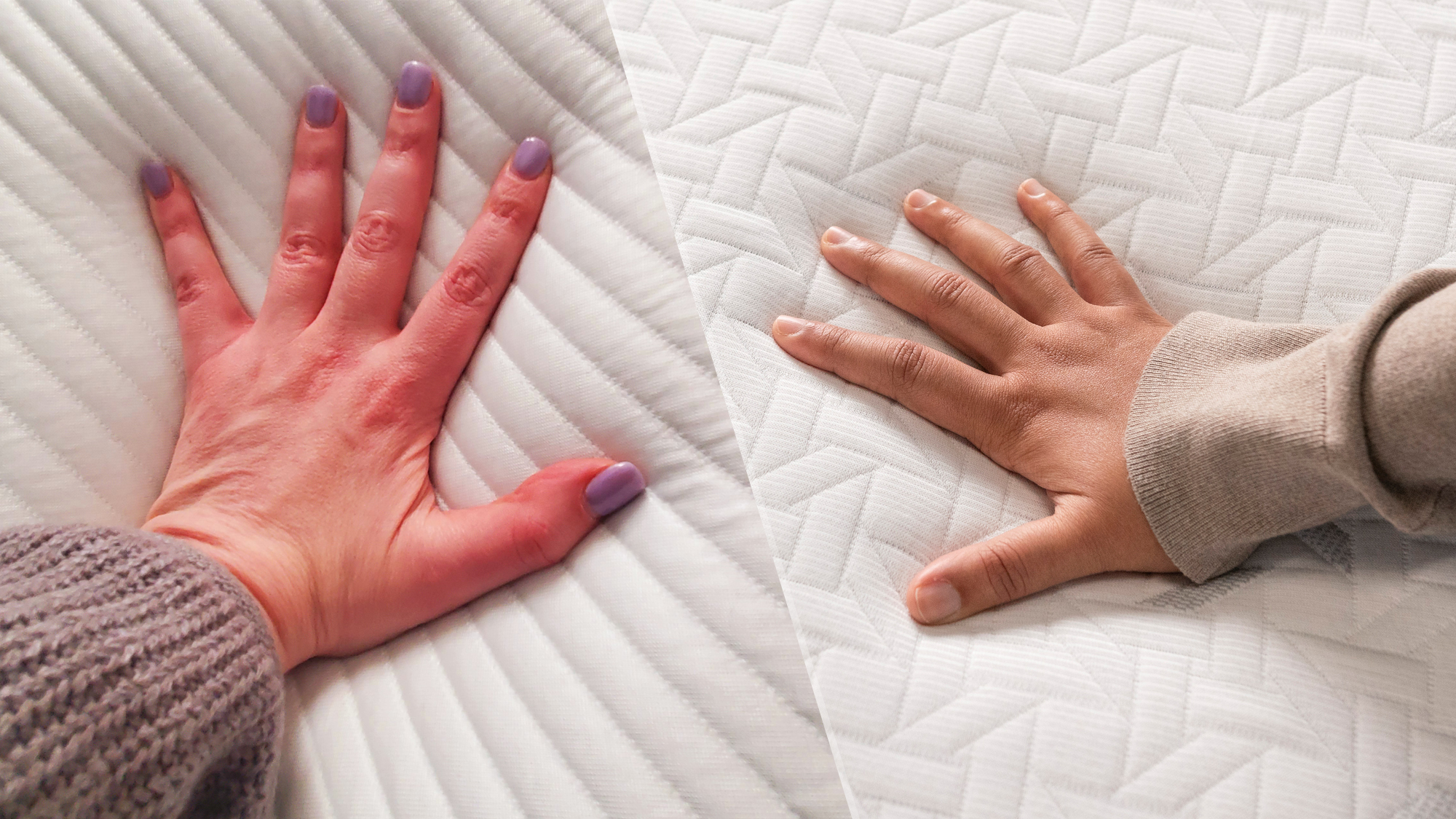
Tempur-Pedic might have kickstarted the memory foam mattress revolution when it transformed NASA cushioning into a bedding material, but the brand remains firm that its original Tempur-Material is not memory foam.
The best memory foam mattresses deliver cushioned pressure relief and a slow response that ensures your body is held in cradled comfort. Tempur-Material foam promises all that and at an even higher level, thanks to its high density build and small cell formation.
But is Tempur-Material actually different to memory foam and does it make a difference to your sleep? We've tested memory foam and Tempur-Material to find the best mattresses for all sleep styles and here we're putting that knowledge in action. When it comes to Tempur-Pedic vs memory foam, which is right for you?
What is memory foam?
Memory foam refers to a type of viscoelastic polyurethane foam often used in mattress production (it's also found in pillows and other home goods.)
Memory foam is known for its slow response time and reaction to heat and pressure. This means when you press into a layer of memory foam it contours to your shape. When the pressure is released, it returns to its original form. This gives memory foam its 'body-hugging' feel.
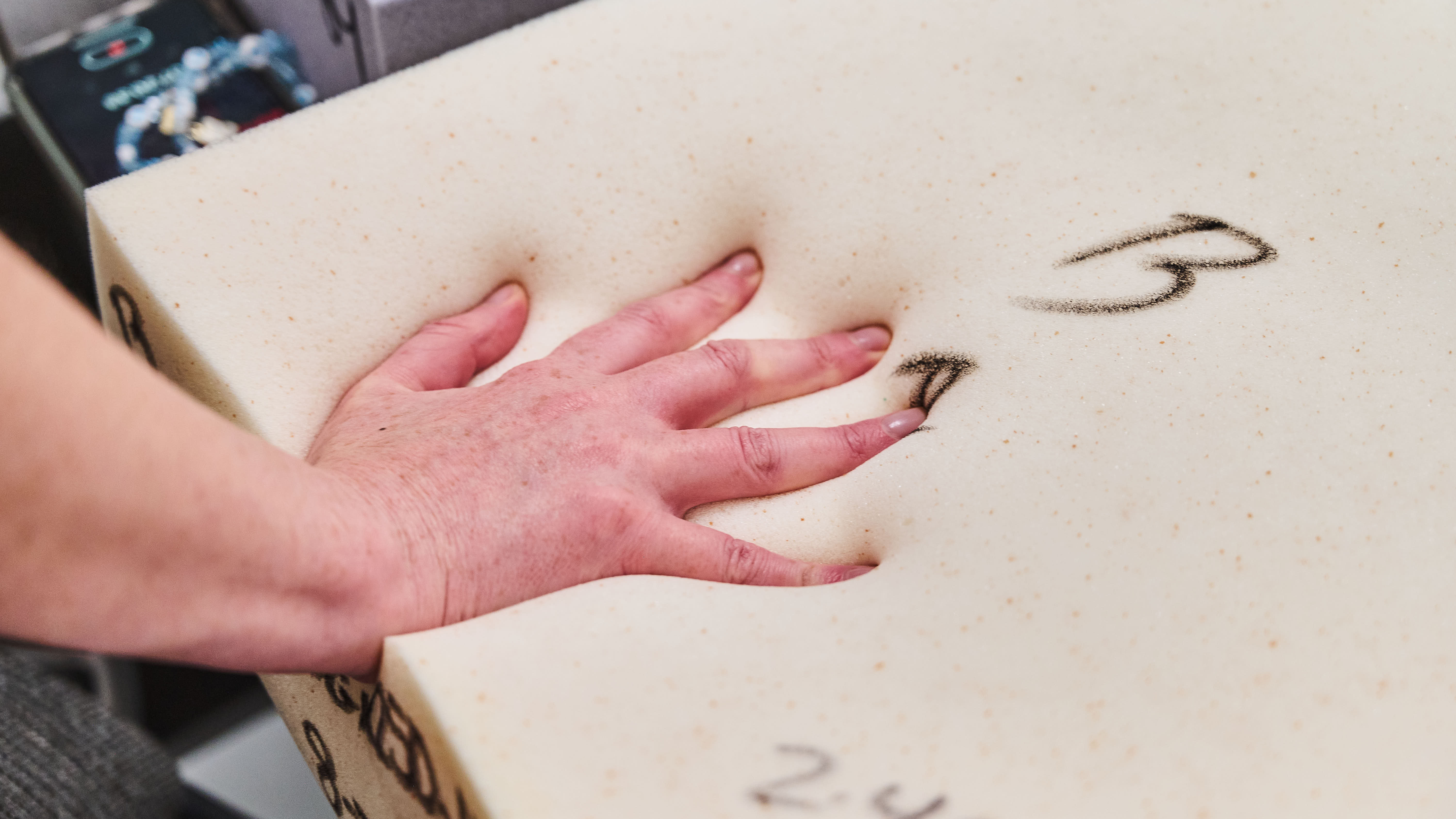
However, during the memory foam making process, compounds can be added to the polyurethane that impact the feel and performance of the foam. This makes memory foam a more diverse material than many realize.
Foam density also impacts the feel and durability of memory foam. High density foams have better durability and deliver deeper contouring than low quality equivalents.
Get instant access to breaking news, the hottest reviews, great deals and helpful tips.
But while many types of foam are used to build a mattress, the term 'memory foam' typically refers to the upper cushioned comfort layers. Other forms of foam, although often consisting of a similar chemical construction, will generally be named 'response foams', 'transition foams', etc. instead.
What is Tempur-Material?
Tempur-Material began its life in outer space — sort of. It was originally a cushioned foam developed by NASA for use aboard space shuttles, and was later adapted and enhanced by Tempur-Pedic for use in the home.
Like standard memory foam, Tempur-Material is made from viscoelastic polyurethane and is known for its body-hugging feel, slow response, and reaction to heat and pressure. (Tempur-Pedic would argue Tempur-Material does all that better than memory foam. But that's what we'll explore below.)
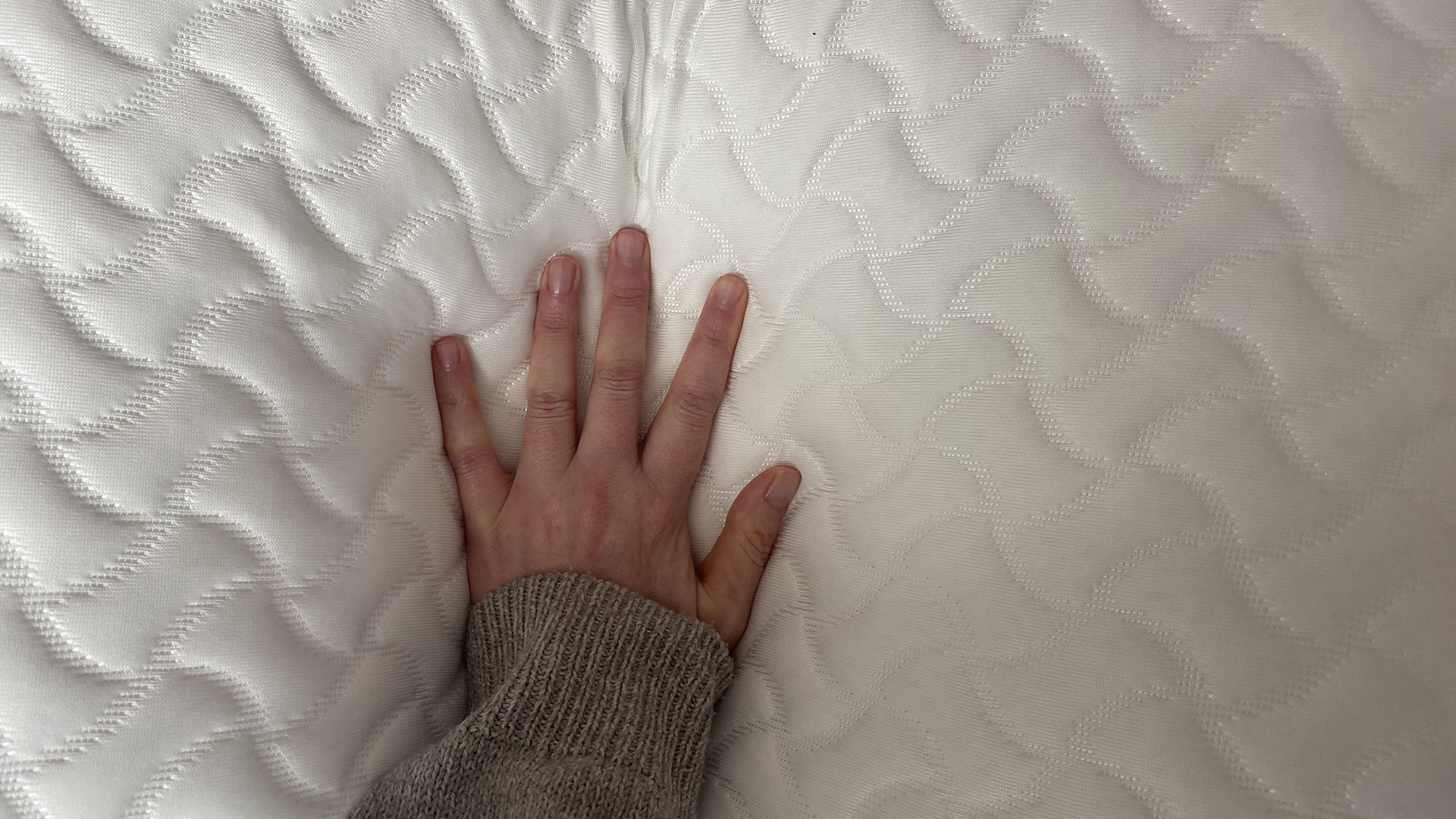
You'll find Tempur-Material used across the Tempur-Pedic line-up; it's not just for mattresses. The Tempur-Pedic Tempur-Cloud Pillow, for example, uses a thin slab of Tempur-Material to create pressure relief for stomach sleepers.
At a basic level, Tempur-Material can be considered a type of memory foam — although Tempur-Pedic would argue otherwise.
Tempur-Material vs Memory Foam mattress: Price
- Memory foam mattresses are often cheaper than hybrid equivalents
- However, memory foam beds come at a range of price points
- Tempur-Pedic mattresses are premium designs
As a general rule, when it comes to memory foam vs hybrid mattresses, a foam bed is cheaper than its equivalent hybrid design. For that reason, the best cheap mattresses are often memory foam models.
But that doesn't mean all memory foam mattresses are cheap. The Saatva Contour5, for example, is one of the best luxury mattresses we've tested and this all-foam design starts at $1,899 MSRP. At the other end of the scale, the Siena Memory Foam Mattress is excellent value for money at just $359 for a queen, but lacks the durability and pressure relief of its pricier cousin.
And there are memory foam mattresses at every price point in between. Memory foam mattresses are also regularly discounted in the mattress sales, with big savings typically occurring over Memorial Day and Black Friday.
When it comes to Tempur-Pedic mattresses, there's a lot less price variety. These are premium beds and even the most affordable Tempur-Cloud model has an MSRP of $1,999 for a queen.
Tempur-Pedic mattress sales are frequent but the savings are often short-lived. So while you'll never have to wait too long for a deal, you still need to time your purchase.
Tempur-Pedic Tempur-Cloud mattress: twin was $1,699 now $1,189.30 at Tempur-Pedic
The Tempur-Pedic Tempur-Cloud mattress is the most affordable bed in the standard Tempur-Pedic line-up and with code CLOUD30 you can enjoy 30% off. This reduces a queen from $1,999 to $1,399.30. A 90-night sleep trial and 10-year warranty are included, which is around the industry average. However at this price point, we might have expected better benefits.
Nectar Premier Memory Foam Mattress: twin $549 at Nectar
At $949 for a queen in the Nectar mattress sale, we consider the Premier Memory Foam to be good value for money. Our Nectar Premier Memory Foam Mattress review team praised its body-hugging feel while the excellent benefits are another cause for celebration — you get a 365-night trial and lifetime warranty included.
Tempur-Material vs Memory Foam mattress: Design
- Both are foams made of viscoelastic polyurethane
- Memory foam can be high density or low density
- Tempur-Material is high density and features a high number of cells
it's hard to directly compare the design of Tempur-Material to the design of memory foam, as the latter is such a broad category. While memory foam can mean low-quality, low-density, low-cost foams, it also refers to the luxury foams used by premium brands.
The primary difference is density. If you have two blocks of foam, both the exact same shape but one made with high density foam and the other low density, the former will contain more foam than the latter.
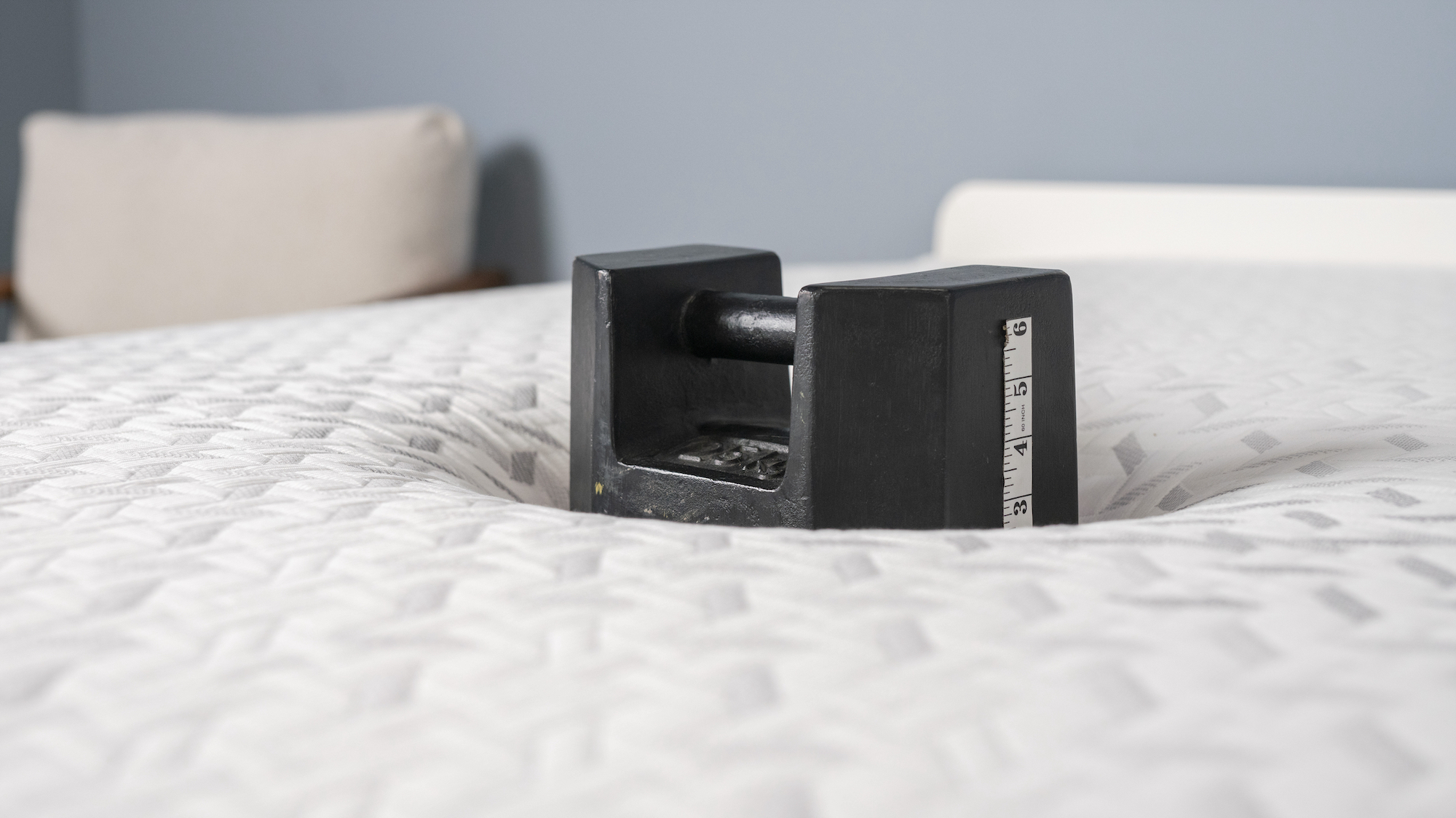
This means the high density foam is more durable and delivers better cushioning. Tempur-Material is a dense foam. The memory foam found in the Saatva Contour5 mattress is another high density foam.
Tempur-Pedic also prides itself on the high cell count of its foam. A high cell count allows the foam to contour to your every movement while still delivering cushioning, with each cell moving to meet your body.
Of course, neither property is unique to Tempur-Pedic — rival brands can and do use foams with a high density and cell count. But it's worth noting that Tempur-Material is patented and Tempur-Pedic claims only 10 scientists know the formula.
Tempur-Material vs Memory Foam mattress: Comfort & support
- Memory foam is best known for its body-hugging feel
- This is exemplified in Tempur-Material
- But memory foam can encompass a range of feels
Tempur-Material is often referred to as the original memory foam. When you think of sinking into a foam mattress, you're inadvertently picturing Tempur-Material. We know from testing that Tempur-Material does have its own distinctive marshmallow feel.
But both materials are defined by their 'hug', responding to heat and pressure to cradle the body. This cushioning helps relieve pressure build up, often most welcome at the shoulders and hips. For this reason, Tempur-Pedic and memory foam beds are among some of the best mattresses for side sleepers.
This pressure relief can also be fantastic at relieving aches and pains — the Tempur-Pedic Tempur-Adapt mattress is among our favorite mattresses for back pain.
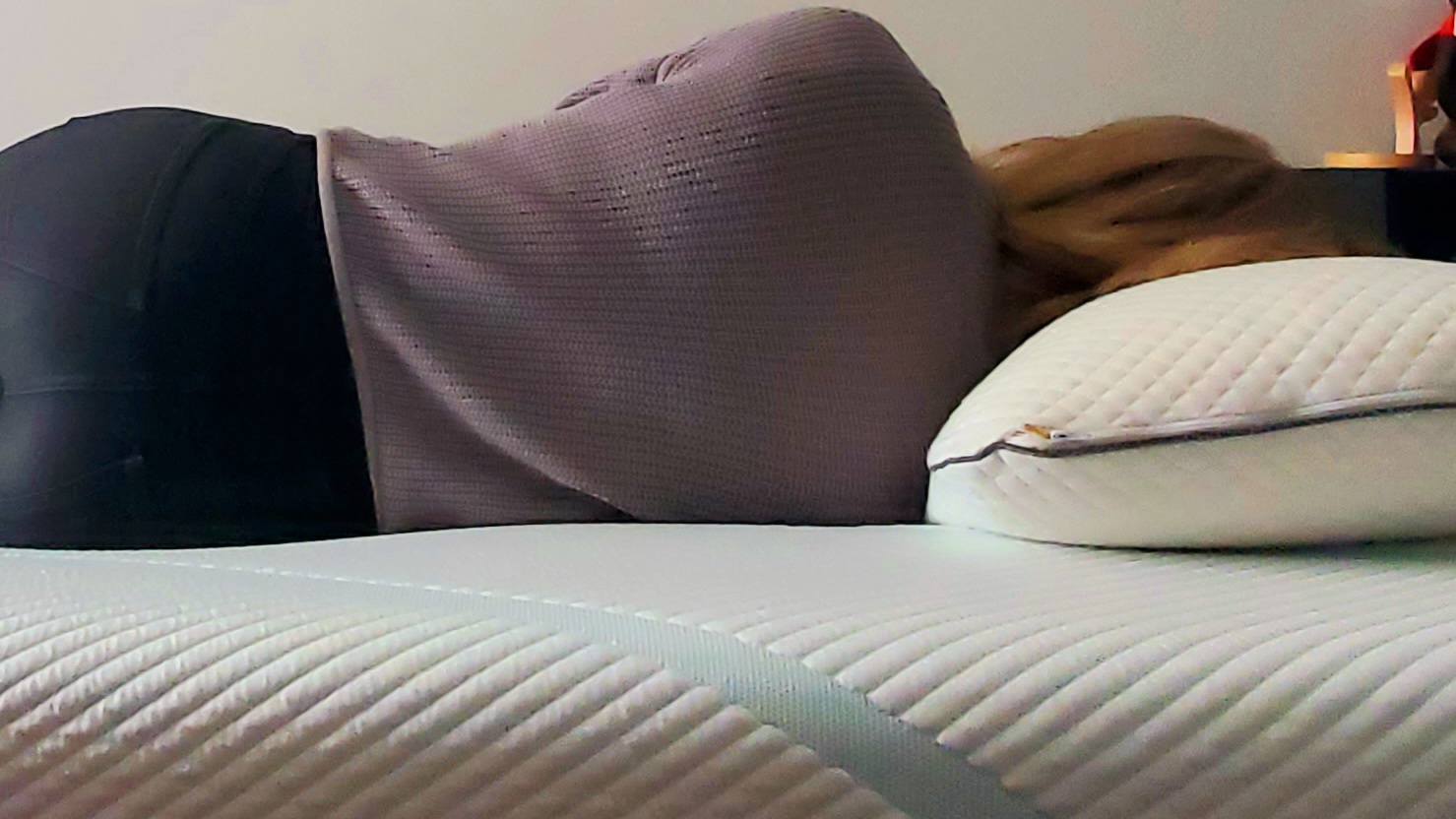
But while this 'cradling' feel is cozy, some do find it stifling. It can be hard to change position on a memory foam mattress and slow moving Tempur-Material can leave you feeling 'stuck' in the bed.
This is where the variety of memory foam comes in. Some memory foams are marshmallow soft, while others deliver a firmer, more responsive feel. With a relatively small mattress line-up, Tempur Material doesn't have the same variety.
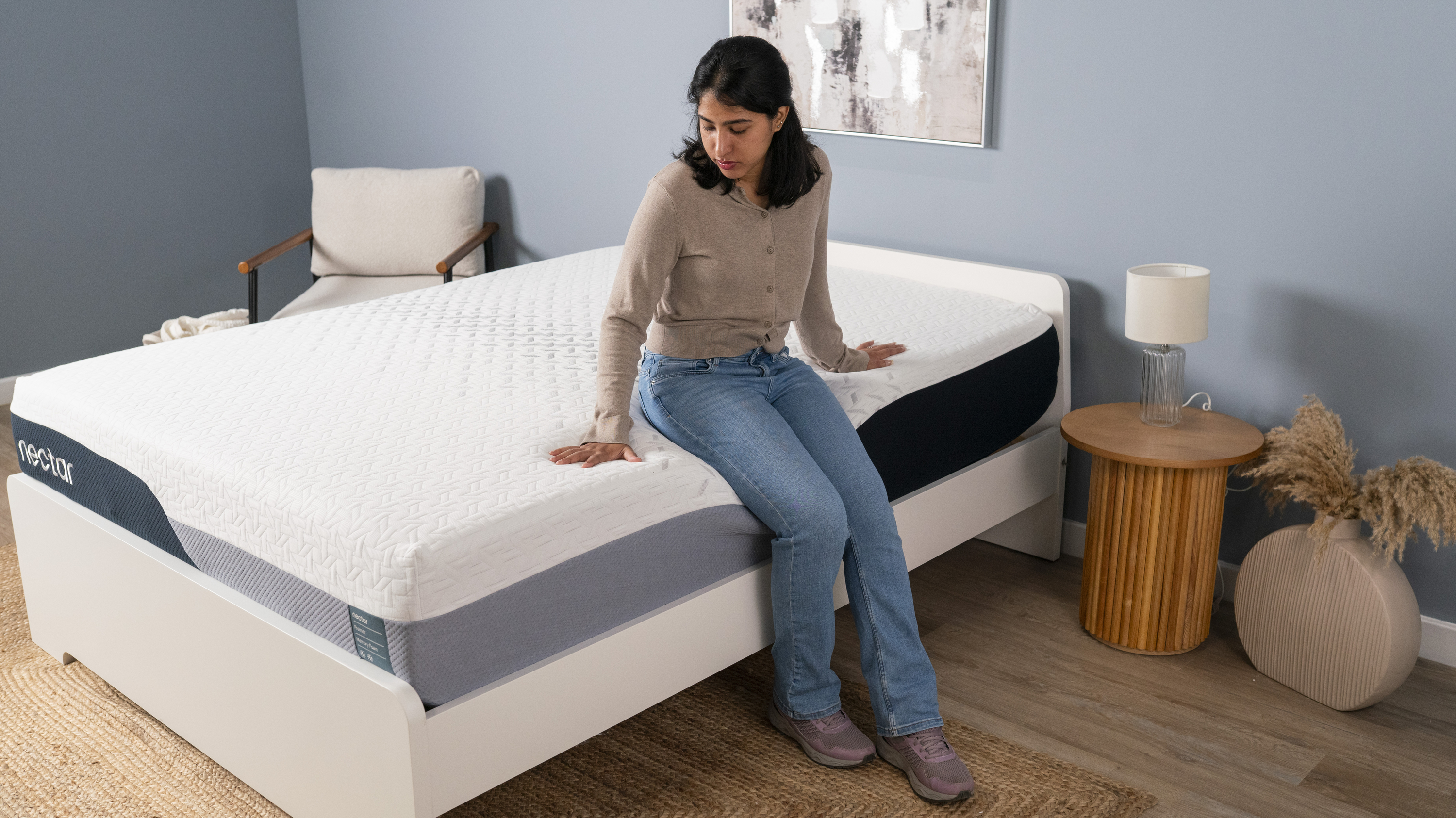
One area that Tempur-Material and memory foam both shine in is motion isolation. This is because the foams are able to absorb movement, preventing it from traveling across the bed and bothering your sleeping partner.
While all memory foam mattresses won't necessarily excel at motion isolation, in general they perform better in this area than hybrid mattresses or latex mattresses, which generally have more bounce to them.
Tempur-Material vs Memory Foam mattress: Durability & maintenance
- Memory foam is among the most durable mattress materials
- Tempur claims it's "even more durable" than standard memory foam
- Foam will eventually start to dip and sag
Memory foam is among the most durable mattress materials and a decent quality, well cared for all-foam mattress can often last up to 10 years.
Tempur-Pedic claims that Tempur-Material is "even more durable" than a standard memory foam and with an included 10-year warranty, we expect a Tempur-Pedic mattress to remain comfortable for 10 years.
However, eventually all memory foam mattresses start to sag and age. This happens as the foams break down due to the constant application and removal of pressure. You might notice you sink into the same dips every night.
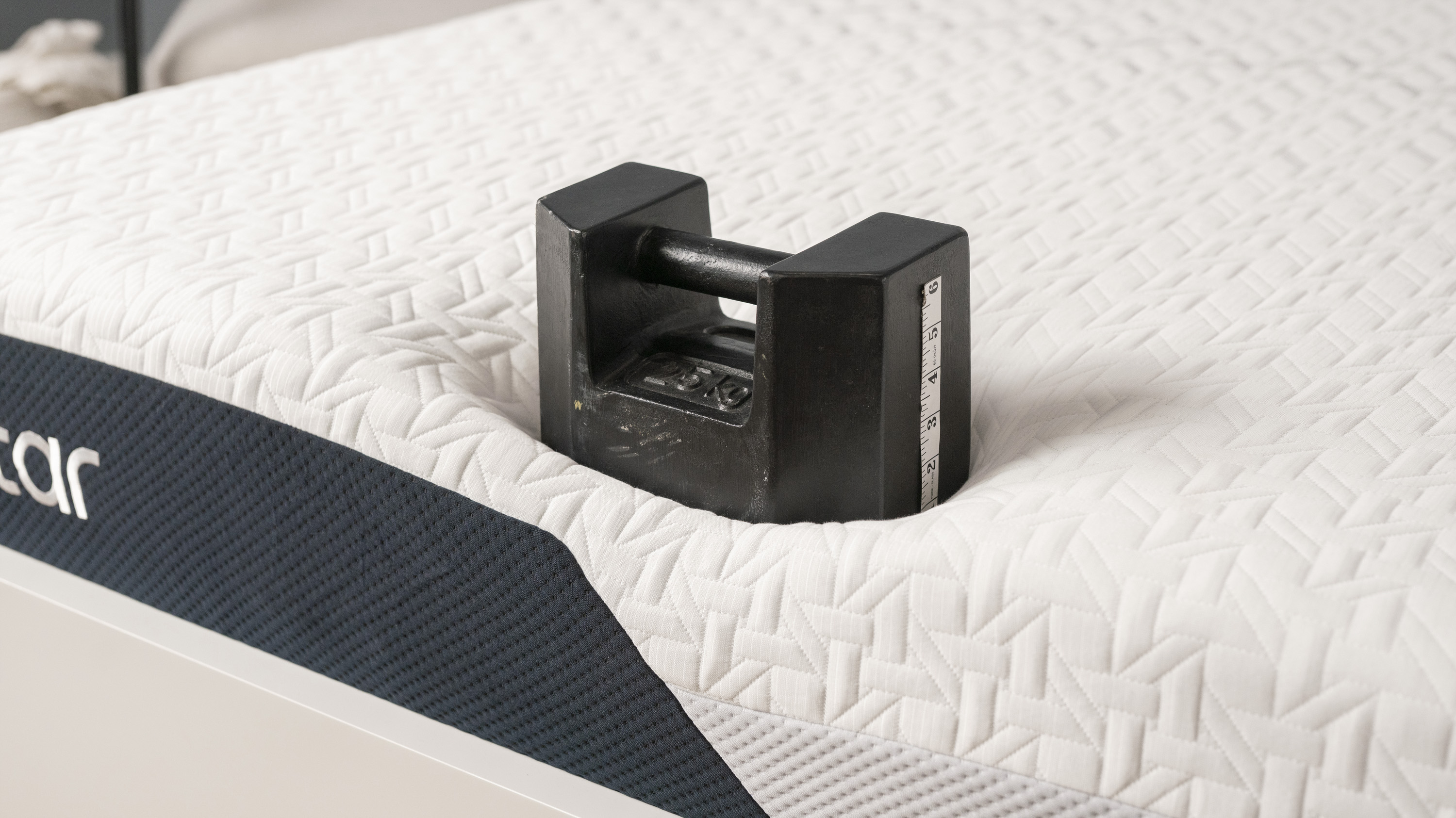
This will happen faster with a low density memory foam, which is why cheaper all-foam beds tend to lack longevity.
Proper care and maintenance can delay this breakdown and you'll want to treat Tempur Material and memory foam in roughly the same way. Keep your foam mattress clean by blotting stains and vacuuming regularly, as well as giving the bed a chance to air.
Both materials can also be damaged by excess heat and water, so keep this in mind when cleaning — a steam cleaner isn't suitable for a memory foam mattress.
Tempur-Material vs Memory Foam mattress: Temperature regulation
- Memory foam responds to heat
- But this can lead to stuffy nights
- Infused foams can aid temperature regulation
Heat is important to the performance of memory foam and Tempur-Material, as both respond to the application of warmth to create the classic 'hug'.
However, the tight cell structure of foam tends to trap this heat, causing the mattress and the sleeper to warm up.
Memory foam and Tempur-Material can both be infused with cooling materials, such as cooling gels, to help offset heat retention and improve temperature regulation (the ideal temperature for sleep is around 65 to 70°F.)
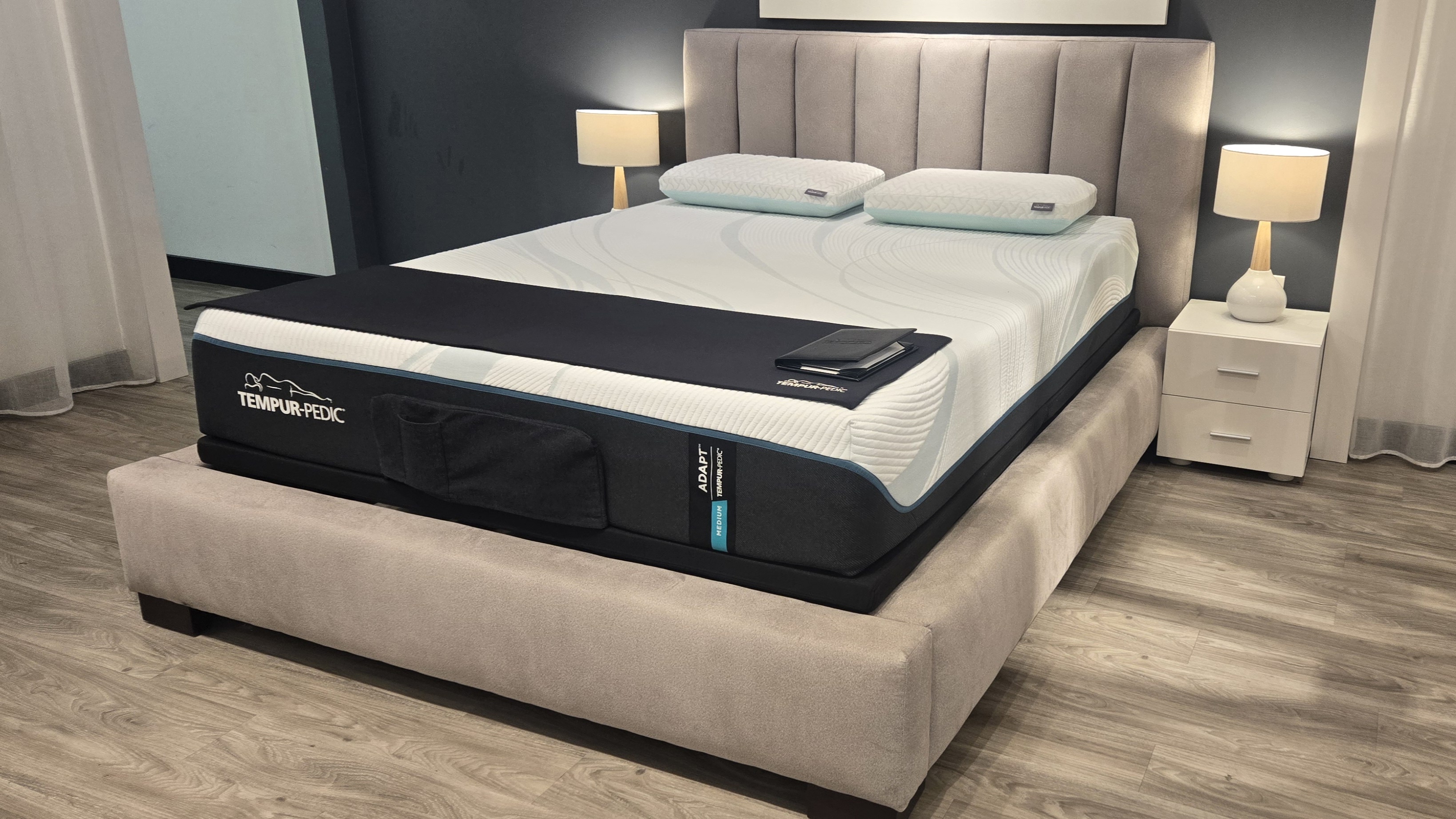
You won't find many memory foam beds among the best cooling mattresses, as spring-and-foam hybrids have better air flow. However, the Cocoon by Sealy Chill mattress is an all-foam bed that delivers good cooling.
Tempur-Material does have a reputation for sleeping hot — in our Tempur-Pedic Tempur-Cloud mattress review we awarded it just 2.5 out of 5 for temperature regulation. But Tempur-Pedic's Breeze collection does promise a cooler feel.
Tempur-Material vs Memory Foam: Which should you buy?
Buy a Tempur-Pedic mattress if...
✅ You want that Tempur-Material feel: Tempur-Material is the original memory foam and Tempur-Pedic mattresses still have a touch of je ne sais quoi. It's a marshmallow comfort you won't get from other types of foam.
✅ You want a high quality, premium memory foam mattress: While this isn't unique to Tempur-Pedic, if you opt for a Tempur-Material bed you know you're investing in a quality build. When choosing from another brand, it can be hard to determine the density of the foam.
✅ You have aching joints: When reviewing Tempur-Pedic mattresses, the stand-out feature noted by our testing team is pressure relief. The dense foams cradle the joints to alleviate pressure build-up, so you can enjoy ache-free mornings.
Buy a memory foam mattress if...
✅ You're on a tight budget: If it's body cradling you want but you don't have a Tempur-Pedic budget, there's a memory foam mattress for every price point. The Nectar Classic Memory Foam mattress is a good, affordable option.
✅ You tend to sleep hot: Memory foam as a whole has a reputation for heat retention but temperature regulation can be improved through infusions and cooling covers. You'll find more options if you look beyond Tempur Material.
✅ You want plenty of variety: Body-cradling and slow-response are the best known features of memory foam but this is a versatile material that can deliver a feel for most sleep styles.

Ruth is an experienced Senior Staff writer at Tom’s Guide, covering all things sleep and mattresses. She writes to help people sleep better, from how-tos to the latest deals to mattress reviews, and has interviewed an array of experts who share her passion. She is also our specialist on memory foam — she’s flown around the world to see memory foam being made — and leads our hotel mattress content. She has a deep interest in the link between sleep and health, and has tried enough mattresses, from Helix to Nectar to Simba, to know the right bed really can make a difference to your wellbeing. Before joining the team at Tom’s Guide, Ruth worked as a sleep and mattress writer for our sister website, TechRadar.
You must confirm your public display name before commenting
Please logout and then login again, you will then be prompted to enter your display name.
